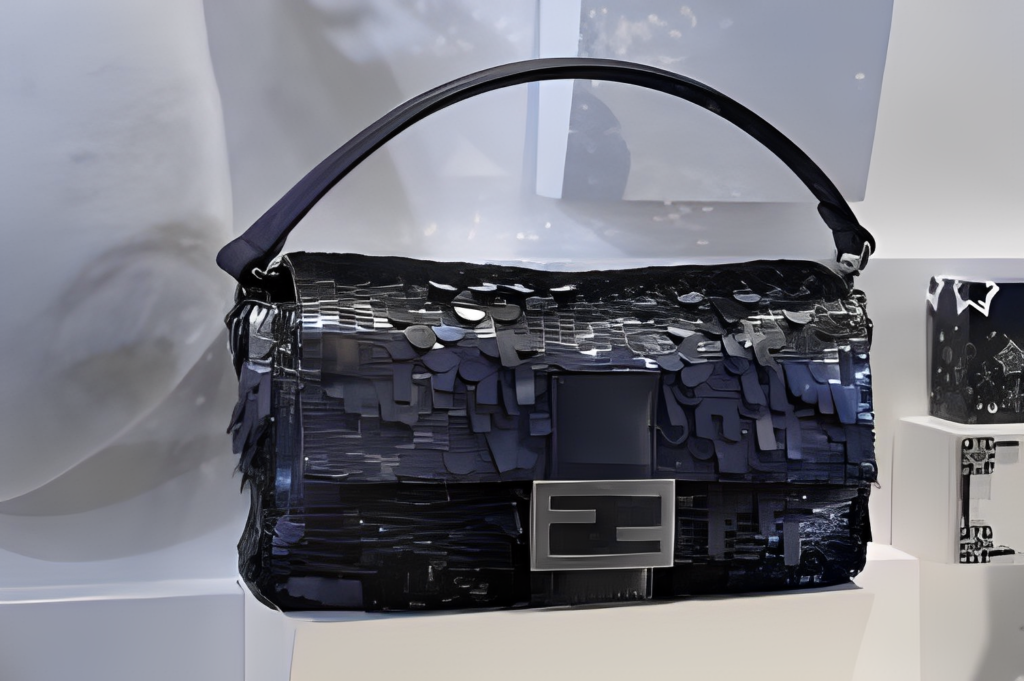How to Tell if a Fendi Bag is Real | Key Tips
Fendi, the renowned Italian fashion house, is celebrated for its luxurious leather goods, including its iconic handbags. However, the popularity of Fendi bags has also attracted counterfeit manufacturers trying to replicate these high-end products. To ensure that you are purchasing an authentic Fendi bag, it is essential to know How to Tell if a Fendi Bag is Real. In this comprehensive guide, we will provide you with expert tips and techniques to determine the authenticity of a Fendi bag.
The Overall Look | How to Tell if a Fendi Bag is Real
When examining a Fendi bag, the first step is to assess its overall appearance. Genuine Fendi bags are known for their sturdy construction and substantial weight. Counterfeit bags often feel flimsy and lightweight in comparison. Pay attention to the signature Fendi pattern, known as the Zucca or FF logo. Authentic bags have a tight weave, and the pattern should appear smooth and seamless. In contrast, counterfeit bags may have a looser weave, resulting in a pixelated or distorted logo.
Logo and Branding
The Fendi logo is a crucial element in determining the authenticity of a bag. Examine the logo closely, paying attention to the color, texture, and alignment. Genuine Fendi logos have clean lines and precise edges, while counterfeit logos may appear irregular or poorly defined. Look for a gap between the double “F” letters in the logo, as this is a distinctive characteristic of authentic Fendi bags. Counterfeit logos often have the letters placed too close together, altering the overall pattern.
Stitching Quality
The quality of stitching is another important factor to consider when authenticating a Fendi bag. Genuine Fendi bags feature even and consistent stitching throughout the bag. The stitches should be tight, and there should be no loose threads or uneven spacing. In contrast, counterfeit bags may exhibit sloppy stitching with varying thread sizes and gaps between stitches. Poor stitching not only affects the bag’s aesthetic appeal but also indicates lower quality craftsmanship.
Read More: How to Tell if a Kate Spade Bag is Real
Hardware and Details
The hardware on a Fendi bag can provide valuable insights into its authenticity. Authentic Fendi bags use high-quality metals for their hardware, such as nickel or brass. Check for branded hardware, such as clasps, studs, straps, rings, and zippers. The hardware should be engraved with the “FENDI” or “FF” logo and exhibit a well-designed finish. Pay attention to the FF clasp, which should be rectangular and elongated, with the two arms of the “F” staggered and never parallel. Additionally, examine the snap closure beneath the clasp, which should be square and engraved with the word “FENDI.”

Materials and Texture
Fendi bags are crafted from premium materials, such as genuine leather or the brand’s signature jacquard canvas. When inspecting the material, ensure that it feels sturdy and of high quality. Counterfeit bags may use cheaper alternatives, such as synthetic leather or low-grade canvas, resulting in a less durable and less luxurious feel. Examine the texture of the bag, especially if it features the Zucca or FF pattern. Genuine bags have a smooth and distinct pattern, while counterfeit bags may have a poorly reproduced or distorted design.
Lining and Interior
The interior of a Fendi bag provides further clues about its authenticity. Authentic Fendi bags have a leather or satin lining that is tightly constructed, with no loose threads or imperfections. The stitching on the interior should be straight and match the color of the lining fabric. Counterfeit bags may exhibit sloppy stitching, mismatched colors, or printed linings that do not align with the brand’s standards. Additionally, look for interior branding, which may include the FF logo, the words “Fendi” or “Made in Italy,” and a style or serial number.
Authenticity Cards and Serial Numbers
Fendi introduced serial numbers in the 1980s as a means to combat counterfeiting. Authentic Fendi bags will have a serial number, usually located on a leather tag inside the bag. The serial number should be consistent with the numbers found on the accompanying authenticity card. Be cautious of bags without serial numbers, as vintage Fendi bags produced before 1980 may not have them. It is also important to note that authenticity cards and serial numbers can be misplaced or missing in pre-owned Fendi bags.
Realistic Price
Authentic Fendi bags come with a higher price tag due to their quality craftsmanship and prestigious brand name. If a deal seems too good to be true, it is likely that the bag is a fake. Be cautious of significantly discounted prices, especially when purchasing from sketchy shops or questionable websites. It is crucial to research reputable sellers and ensure that you are buying from trusted sources to avoid purchasing counterfeit Fendi bags.
Read More: How to Tell if a Valentino Bag is Real
How to Avoid Buying a Fake Fendi Online?
When shopping for Fendi bags online, take extra precautions to avoid falling victim to counterfeit products. Research the seller’s reputation and read customer reviews to ensure their credibility. Examine the product listing thoroughly, checking for detailed information about the bag’s features, materials, and dimensions. High-resolution images that allow for close inspection of the bag’s details are essential. If in doubt, reach out to the seller for additional information or seek advice from Fendi directly.
Frequently Asked Questions
Do all Fendi bags have serial numbers?
Do all Fendi bags have serial numbers?
Fendi introduced serial numbers in the 1980s, but vintage bags produced before that may not have them. Newer bags should have a serial number, usually located on a leather tag inside the bag.
How do I know what year my Fendi bag is?
How do I know what year my Fendi bag is?
The style and art codes found on the interior label can help identify the year of a Fendi bag. Vintage bags may have a style number stamped in metallic foil or debossed on a leather tab.
What is the significance of holograms and RFID tags?
What is the significance of holograms and RFID tags?
Fendi introduced holograms with serial numbers in the early 2000s as a security measure against counterfeiting. In recent years, RFID tags containing detailed production and origin information have been incorporated into some Fendi bags.
Conclusion
Authenticating a Fendi bag requires careful examination of various elements, including the overall look, logo and branding, stitching quality, hardware and details, materials and texture, lining and interior, authenticity cards and serial numbers, and realistic pricing. By familiarizing yourself with these key factors and following the expert tips provided in this guide, you can confidently distinguish between genuine Fendi bags and counterfeit replicas. Remember to always buy from trusted sources and prioritize quality and authenticity when investing in a Fendi bag.







